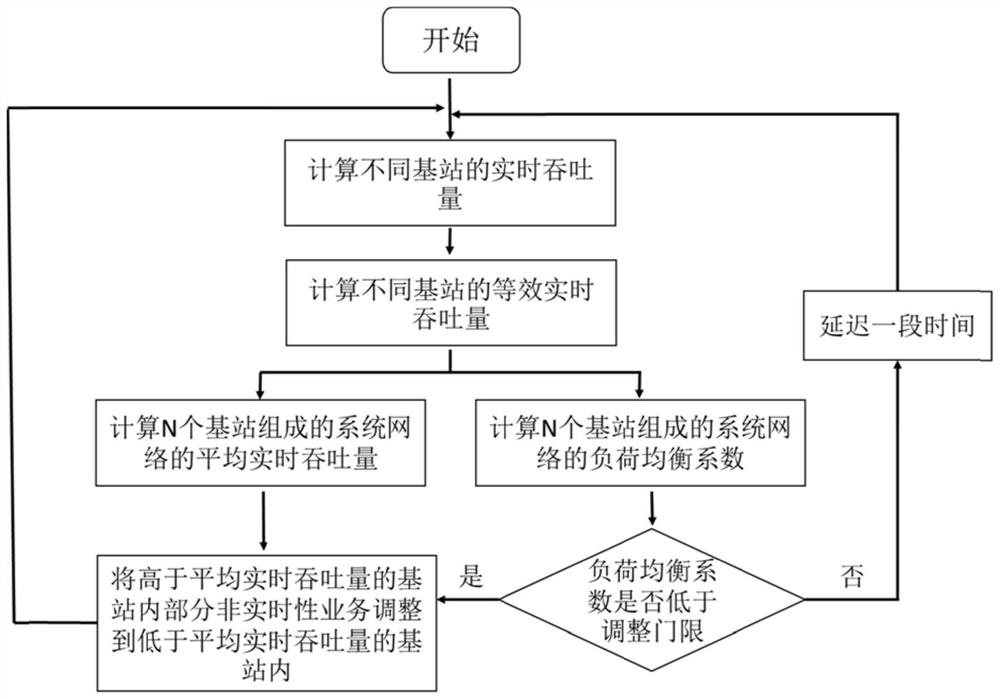A service balancing method based on base station throughput capability in 5G network
A throughput and real-time throughput technology, applied in network traffic/resource management, wireless communication, electrical components, etc., can solve problems such as not considering the actual carrying capacity of the base station, and achieve the effect of improving stability
- Summary
- Abstract
- Description
- Claims
- Application Information
AI Technical Summary
Problems solved by technology
Method used
Image
Examples
Embodiment Construction
[0033] The present invention will be further described below in conjunction with the accompanying drawings and embodiments.
[0034] (1) Scheme principle
[0035] In the 5G ultra-dense network (UDN), assuming that there are N small base stations in a certain area, the coverage areas between them have intersections, and users in the intersections can freely choose serving cells according to network conditions, or the system can specify services district. Define the system network load balance coefficient I composed of these N small base stations JF The calculation method is shown in formula (1):
[0036]
[0037] Among them: N is the number of small base stations in the area, B is the set of base stations, and i is the i-th base station in the set; P i is the equivalent throughput of the i-th base station.
[0038] For P in formula (1) i The description is as follows:
[0039] P i is the equivalent throughput of the i-th base station:
[0040] P i =P*(p th-r-i / p ...
PUM
 Login to View More
Login to View More Abstract
Description
Claims
Application Information
 Login to View More
Login to View More - R&D
- Intellectual Property
- Life Sciences
- Materials
- Tech Scout
- Unparalleled Data Quality
- Higher Quality Content
- 60% Fewer Hallucinations
Browse by: Latest US Patents, China's latest patents, Technical Efficacy Thesaurus, Application Domain, Technology Topic, Popular Technical Reports.
© 2025 PatSnap. All rights reserved.Legal|Privacy policy|Modern Slavery Act Transparency Statement|Sitemap|About US| Contact US: help@patsnap.com



